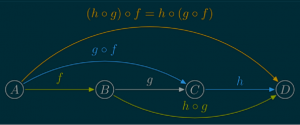In a previous post, I gave the well-known approximation to the standard deviation of the sample median
$$\sigma \approx {1 \over 2\sqrt{n}\,f(x_m)}$$
where $f(x)$ is the probability density function and $x_m$ is the median (see Laplace and Kenney and Keeping). Here are some examples.
| Distribution |
Median |
Approx StD of Median |
| Standard Gaussain mean 0 std 1 |
0 |
$\sqrt{\pi \over{2 n}}$ |
| Uniform 0 to 1 |
1/2 |
$1\over{2\sqrt{n}}$ |
| Logistic with mean 0 and shape $\beta$ |
0 |
${2\beta}\over{\sqrt{n}}$ |
| Student T with mean 0 and $\nu$ deg free |
0 |
$\frac{\sqrt{\nu }\ B\left(\frac{\nu }{2},\frac{1}{2}\right)}{2 \sqrt{n}}$ |
$\ $
Computing the exact standard deviation of the sample median is more difficult. You first need to find the probability density function of the sample median which is
$$f_m(x) = g(c(x)) f(x)$$
where
$$g(x) = \frac{(1-x)^{\frac{n-1}{2}}
x^{\frac{n-1}{2}}}{B\left(\frac{n+1}{2},\frac{n+1}{2}\right)},$$
$B$ is the beta function, $c(x)$ is the cumulative distribution function of the sample distribution, and $f(x)$ is the probability density function of the sample distribution.
Now the expected value of the sample median is
$$\mu_m = \int x f_m(x) dx$$
and the standard deviation of the sample median is
$$\sigma_m = \sqrt{\int (x-\mu_m)^2 f_m(x)\ dx}. $$
Generally speaking, these integrals are hard, but they are fairly simple for the uniform distribution. If the sample distribution is uniform between 0 and 1, then
$f(x) = 1,$
$c(x) = x,$
$g(x) = \frac{(1-x)^{\frac{n-1}{2}}
x^{\frac{n-1}{2}}}{B\left(\frac{n+1}{2},\frac{n+1}{2}\right)},$
$f_m(x) = g(x),$
$\mu_m = \int x g(x) dx \ =\ 1/2,$ and
$$\sigma_m = \sqrt{\int (x-\mu_m)^2 f_m(x)\ dx}\ = \ {1\over{2\sqrt{n+2}}} $$
which is close to the approximation given in the table.
(Technical note: The formulas above only apply for odd values of $n$ and continuous sample probability distributions.)
If you want the standard deviation for the sample median of a particular distribution and a $n$, then you can use numerical integration to get the answer. If you like, I could compute it for you. Just leave a comment indicating the distribution and $n$.

